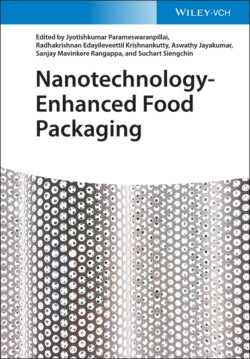Читать книгу Nanotechnology-Enhanced Food Packaging - Группа авторов - Страница 45
2.4 Main Biodegradable Polymers Chemically Synthesized
ОглавлениеPolylactide (PLA) also known as poly(lactic acid) are macromolecules synthetized by the polymerization of lactic acid (LA) or by the ring-opening polymerization (ROP) of lactide, referred to as polylactide [155, 156]. Both types are commonly referred as PLA; however, ROP of lactide is the most used route to obtain PLA for food packaging applications [157].
PLA is a biodegradable macromolecule, and it is considered as one of the most extensively developed commercial biomaterials. PLA is produced by lactic fermentation of polysaccharides or sugars extracted from corn, potato, sugar cane, or sugar beet. Other raw materials such as cellulosic biomass, agricultural waste, and nonfood crops (e.g. switchgrass) can be used as alternative during the fermentation [155, 156]. PLA can be processed by means of extrusion, thermoforming, injection molding, blow molding, and industrial scale [156].
Films and coating based on PLA are transparent materials with glass transition at room temperature. These materials have tensile strength of ≈60 MPa, an elongation at break of ≈5%, and a Young modulus of 3–4 GPa, and it constitutes a promising alternative to conventional plastics in food packaging. Some applications of PLA are presented in Table 2.8. However there are several factors that limit the application of PLA: low oxygen barrier (O2) compared to poly(ethylene terephthalate) (PET) and similar to that of polystyrene (PS). The carbon dioxide permeability coefficient of PLA is lower than PS and low-density polyethylene (LDPE). The nitrogen permeability of PLA is lower than PS but higher than that informed for unplasticized poly(vinyl chloride) (PVC). PLA is a hygroscopic material and very sensitive to high relative humidity and temperature [163].
Other factors that reduce its use commercially are associated with the low thermal stability and high price [156]. Besides that, the PLA is brittle and has low toughness due to its glass transition temperature (55–60 °C) and slow crystallization rate. Thus, its use at low temperatures is limited by the low heat deflection temperature [157, 164]. To overcome the intrinsic fragility of PLA, a number of approaches have been developed such as blend modification, plasticization, copolymerization, and incorporation of natural nanofillers [165].
Some plasticizers such as polyols, citrate ester, lactic ester, and glycerol esters can be used to improve the processability of PLA and enhance its flexibility and ductility [166]. Also, in the literature, PLA has been blended with poly(ethylene glycol), poly(propylene glycol), and polymeric adipates [155, 167]. In this sense, Yang et al. [165] studied PLA films blended with ethylene-vinyl acetate-glycidyl methacrylate (NPG) and lignin microparticles to improve the toughness of PLA and performance of antioxidant for active food packing. The results showed improvement of toughness and water vapor barrier properties and demonstrated the satisfactory compatibility between lignin, PLA, and NPG.
Table 2.8 Films and coatings based on poly(lactic acid) for food packaging applications.
| Components | Production approach | Main results | References |
|---|---|---|---|
| PLAa)/nanochitosan/Polylophium involucratum essential oil | Casting | Films with antibacterial and antioxidant properties were used to preserve chicken fillets at refrigeration temperature | [158] |
| PLAa)/pea starch | Casting | Films reduced the weight loss of cherry tomatoes and extended the retention of organic acids and vitamin C | [159] |
| PLAa)/GTEb) | Blown extrusion | Films reduced the lipid oxidation of smoked salmon during the storage (60 days) | [160] |
| PLAa)/carvacrol | Electrospinning | Films with high thermal stability and antimicrobial properties against aerobic bacteria, mold, and yeast in whole wheat bread | [161] |
| PLAa)/GOc)/CLOd) | Casting | Elastic films with antimicrobial activity against S. aureus and E. coli | [162] |
a) PLA: poly(lactic acid).
b) GTE: green tea extract.
c) GO: graphene oxide.
d) CLO: clove essential oil.
